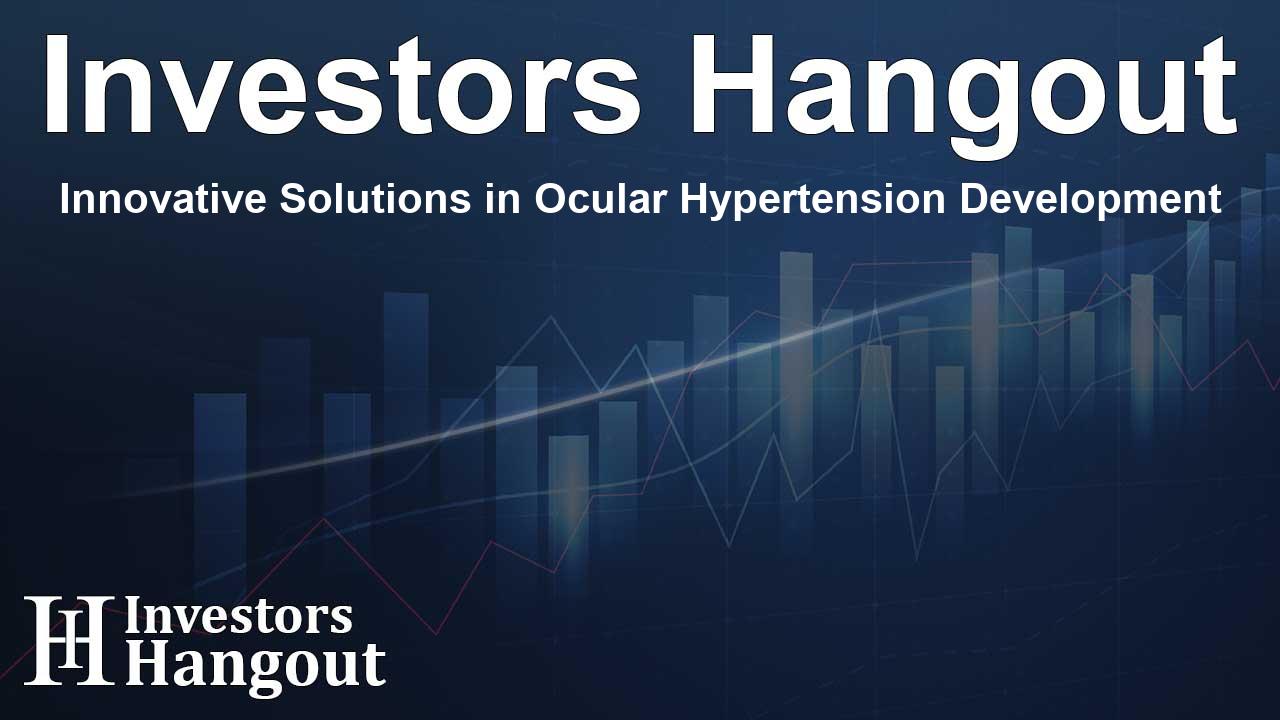Innovative Solutions in Ocular Hypertension Development

Innovative Approaches in Ocular Hypertension Treatment
The ocular hypertension market is witnessing significant growth, largely fueled by an increasing prevalence of conditions that impede the outflow of aqueous humor. This results in heightened intraocular pressure (IOP), which poses serious risks to eye health. New treatment options such as sustained-release implants and micro-dosing technologies are enhancing patient compliance and therapeutic outcomes. Coupled with advancements in imaging techniques like optical coherence tomography (OCT), the early diagnosis and timely intervention in ocular hypertension have become more achievable, signifying strong growth potential in this space.
The Growing Landscape of Ocular Hypertension Therapies
According to recent insights, the ocular hypertension space is bustling with activity. Over 60 companies are engaged in developing more than 70 ocular hypertension therapies, indicating a vibrant pipeline ready to revolutionize treatment options. Notable contributors include Nicox, Qlaris Bio, TheratOcular Biotek Co., Ltd., and Ocular Therapeutix, all striving to launch innovative therapies that improve patient experiences.
Insights from the Ocular Hypertension Pipeline
An extensive report on ocular hypertension pipelines reveals promising new therapies. For instance, recent trials involving leading candidates such as NCX-470, PDP716, and QLS-101 showcase the breadth of research and development dedicated to tackling this pressing health issue. As these drugs advance through clinical stages, patient hope for effective management of ocular conditions grows.
Clinical Trial Highlights
Recent pivotal trials have highlighted several breakthroughs in the ocular hypertension treatment pipeline. For instance, Nicox reported full enrollment for its Denali Phase III trial, which focuses on the efficacy and safety of NCX-470 in patients suffering from open-angle glaucoma or ocular hypertension. Similarly, MediPrint Ophthalmics has announced positive outcomes from its Phase IIb trial of LL-BMT1, which utilizes a unique 3D printed, drug-eluting contact lens designed for sustained delivery of medication.
Understanding Ocular Hypertension
Ocular hypertension is characterized by elevated pressure within the eye, exceeding 21 mmHg. This condition often correlates with an increased risk of developing glaucoma, a disease that can lead to optic nerve damage and vision loss. Understanding the distinction between ocular hypertension and glaucoma is crucial; while both involve high eye pressure, only glaucoma results in physical damage to the optic nerve.
Diagnosis and Monitoring
The diagnosis of ocular hypertension typically involves various assessments, including central visual field evaluations, optic nerve examinations, and IOP measurements using techniques such as Goldmann applanation tonometry. Additionally, imaging techniques like OCT facilitate an enhanced understanding of the optic nerve head.
Treatment Options and Long-term Management
The primary approach to managing ocular hypertension involves an array of eye drop medications. These treatments aim to lower IOP by either reducing aqueous humor production or improving its drainage. Some commonly utilized drugs include prostaglandins, beta-blockers, and carbonic anhydrase inhibitors. In cases where these options prove ineffective, alternative strategies such as laser treatment may be considered.
Patients diagnosed with ocular hypertension must undergo regular monitoring to assess any progression towards glaucoma, ensuring that their treatment plans remain effective over time. Continuous consultations with eye care professionals are essential to maintaining optimal ocular health and mitigating potential complications.
Future Perspectives in Ocular Hypertension
The landscape of ocular hypertension treatment is poised for transformation as innovative drugs and technologies come to fruition. The immense dedication demonstrated by key companies in the ocular hypertension field is paving the way for therapies that could dramatically enhance the quality of life for affected individuals.
Frequently Asked Questions
What is ocular hypertension?
Ocular hypertension refers to increased pressure within the eye, which can pose a risk for developing glaucoma if not monitored and treated appropriately.
How is ocular hypertension diagnosed?
Diagnosis typically involves a series of tests, including visual field evaluations and eye pressure measurements to assess intraocular pressure levels.
What treatment options are available for ocular hypertension?
Current treatments include prescription eye drops aimed at lowering intraocular pressure and, in some cases, surgical interventions may be necessary.
Why is monitoring important for ocular hypertension patients?
Regular monitoring helps to promptly identify any progression towards glaucoma and allows for timely adjustments to treatment plans to preserve eye health.
What advancements are being made in ocular hypertension treatments?
Several pharmaceutical companies are developing innovative therapies, witnessing breakthroughs in drug delivery systems, and improving patient compliance with cutting-edge treatment methods.
About The Author
Contact Dominic Sanders privately here. Or send an email with ATTN: Dominic Sanders as the subject to contact@investorshangout.com.
About Investors Hangout
Investors Hangout is a leading online stock forum for financial discussion and learning, offering a wide range of free tools and resources. It draws in traders of all levels, who exchange market knowledge, investigate trading tactics, and keep an eye on industry developments in real time. Featuring financial articles, stock message boards, quotes, charts, company profiles, and live news updates. Through cooperative learning and a wealth of informational resources, it helps users from novices creating their first portfolios to experts honing their techniques. Join Investors Hangout today: https://investorshangout.com/
The content of this article is based on factual, publicly available information and does not represent legal, financial, or investment advice. Investors Hangout does not offer financial advice, and the author is not a licensed financial advisor. Consult a qualified advisor before making any financial or investment decisions based on this article. This article should not be considered advice to purchase, sell, or hold any securities or other investments. If any of the material provided here is inaccurate, please contact us for corrections.
